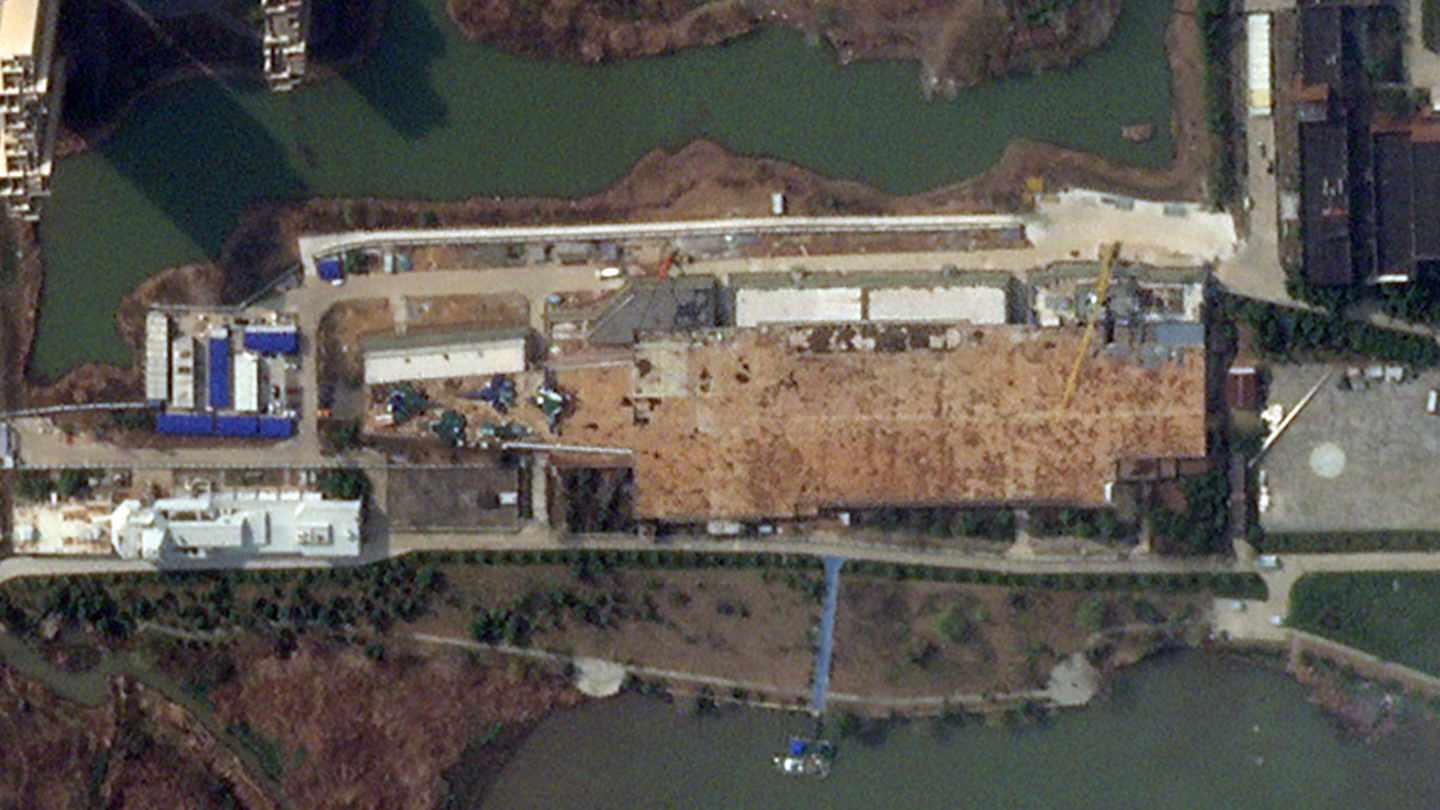China’s full-size, land-based aircraft carrier test facility, a key part of the country’s path toward establishing a carrier fleet and associated air wings, is being modified once again, and this time in a massive way. The extensive reworking and expansion of the unique facility suggests that the aircraft carrier mockup is now intended to represent a layout similar to the U.S. Navy’s Ford class. This likely coincides with the configuration of China’s next, more advanced, homegrown carrier design.
A satellite photo of the land-based aircraft carrier mockup in Wuhan, taken on April 6, shows the changes that have taken place, including a much greater overall flight-deck width, and the island superstructure redesigned and moved further aft, as on the Ford class. So significant is the extra width, meanwhile, that the edges of the deck now extend out to or even over the adjacent road.
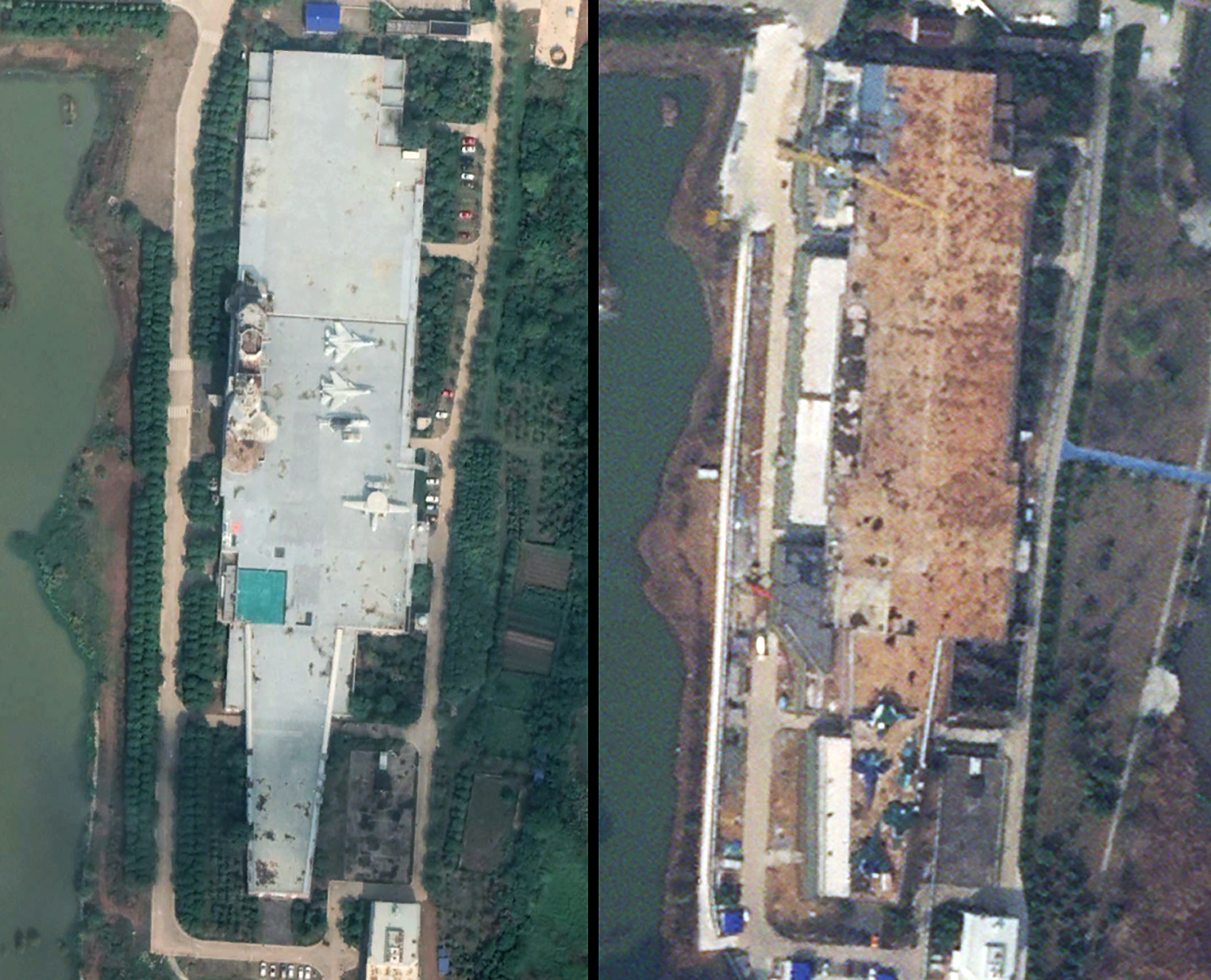
The primary role of the aircraft carrier mockup is to evaluate different aircraft designs for potential use at sea, including how they will fit and be moved around on the carrier’s deck. It should also be noted that the structure sits atop a building, something not immediately obvious from satellite imagery.
On the deck in the latest image are mockups of various aircraft, although these are covered with tarpaulins or some other material, making it hard to identify them definitively. At least one of the mockups is a J-15 Flanker series carrier-based fighter, while another looks to be a J-35 carrier-based stealth fighter, and another a KJ-600 carrier-based airborne early warning and control (AEW&C) aircraft. Mockups of this kind are frequently used in carrier development work in China, both on land and at sea.
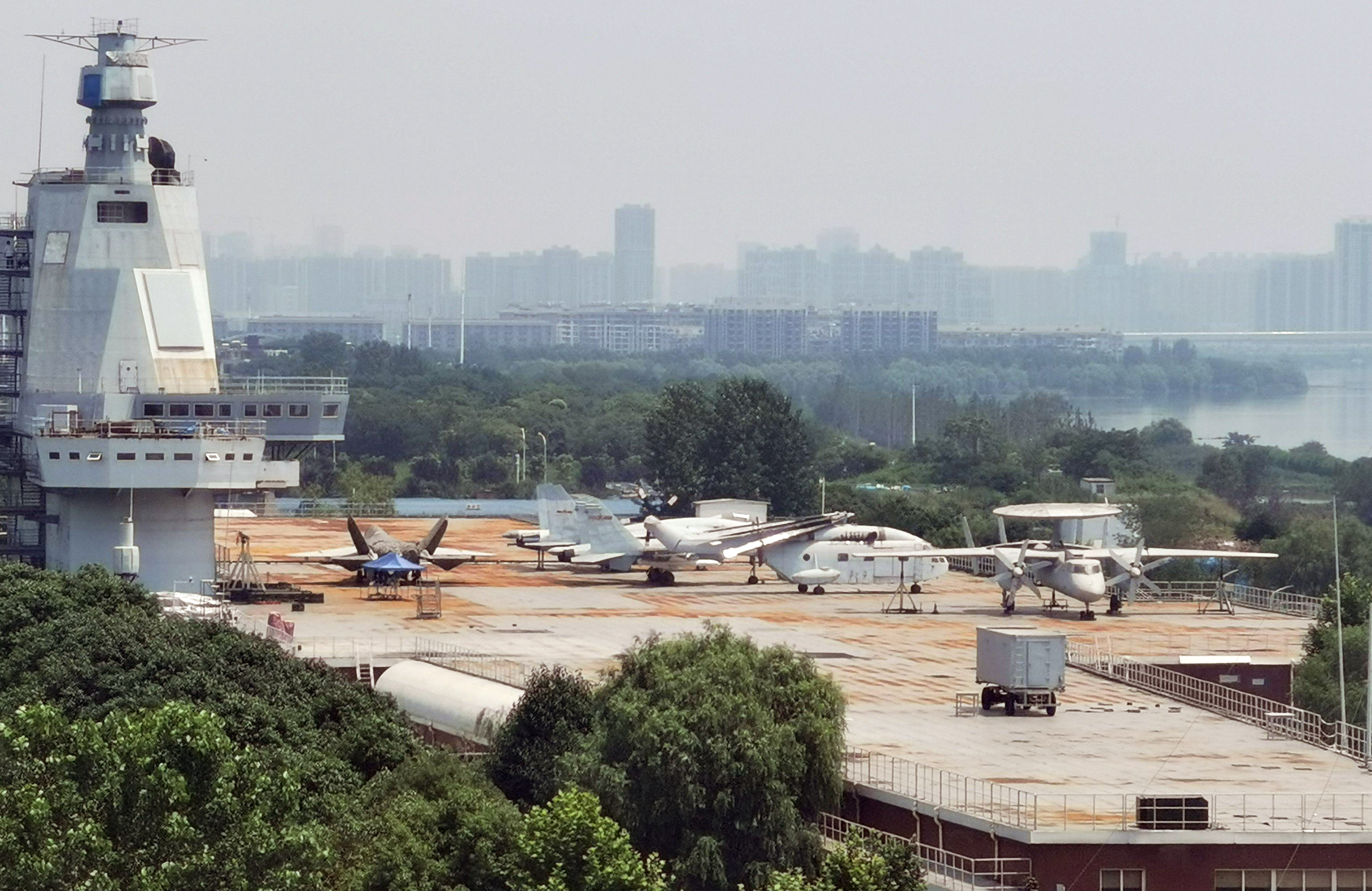
In the past, an apparent mockup of China’s stealthy GJ-11 Sharp Sword unmanned combat aerial vehicle (UCAV) has also appeared aboard the land-based carrier mockup, as you can read about here.
Work with radio emissions and other testing is also done at the facility.
When it first appeared, the full-size aircraft carrier mockup broadly replicated the design of the Type 001 and Type 002 carriers.
The Type 001 Liaoning (CV-16), the first vessel of this type to be operated by the People’s Liberation Army Navy (PLAN), was acquired from Ukraine as an incomplete Soviet Kuznetsov class ship, the Varyag. The next PLAN carrier to enter service, the Type 002 Shandong (CV-17), was built in China but was still modeled closely on the Type 001.

Subsequently, Wuhan’s aircraft carrier mock-up was modified to better resemble China’s next carrier, the Type 003 Fujian (CV-18). This introduced a different configuration, with no bow takeoff ramp. Instead, the Type 003 marks the PLAN’s switch to catapult-assisted takeoff but arrested recovery, or CATOBAR, operations.

Now, it seems, the facility is being prepared for tests of China’s next-generation aircraft carrier, generally referred to as the Type 004. At the same time, the remodeling should also provide a better representation of the Fujian, a vessel that is still undergoing pre-service trials.
In fact, the new Type 004 carrier may well already be under construction.
In February of this year, TWZ reported on how construction work at a shipyard in Dalian, seen in satellite imagery dating back to May 2024, revealed a module consistent with an aircraft carrier — or otherwise related to the testing of such a vessel.
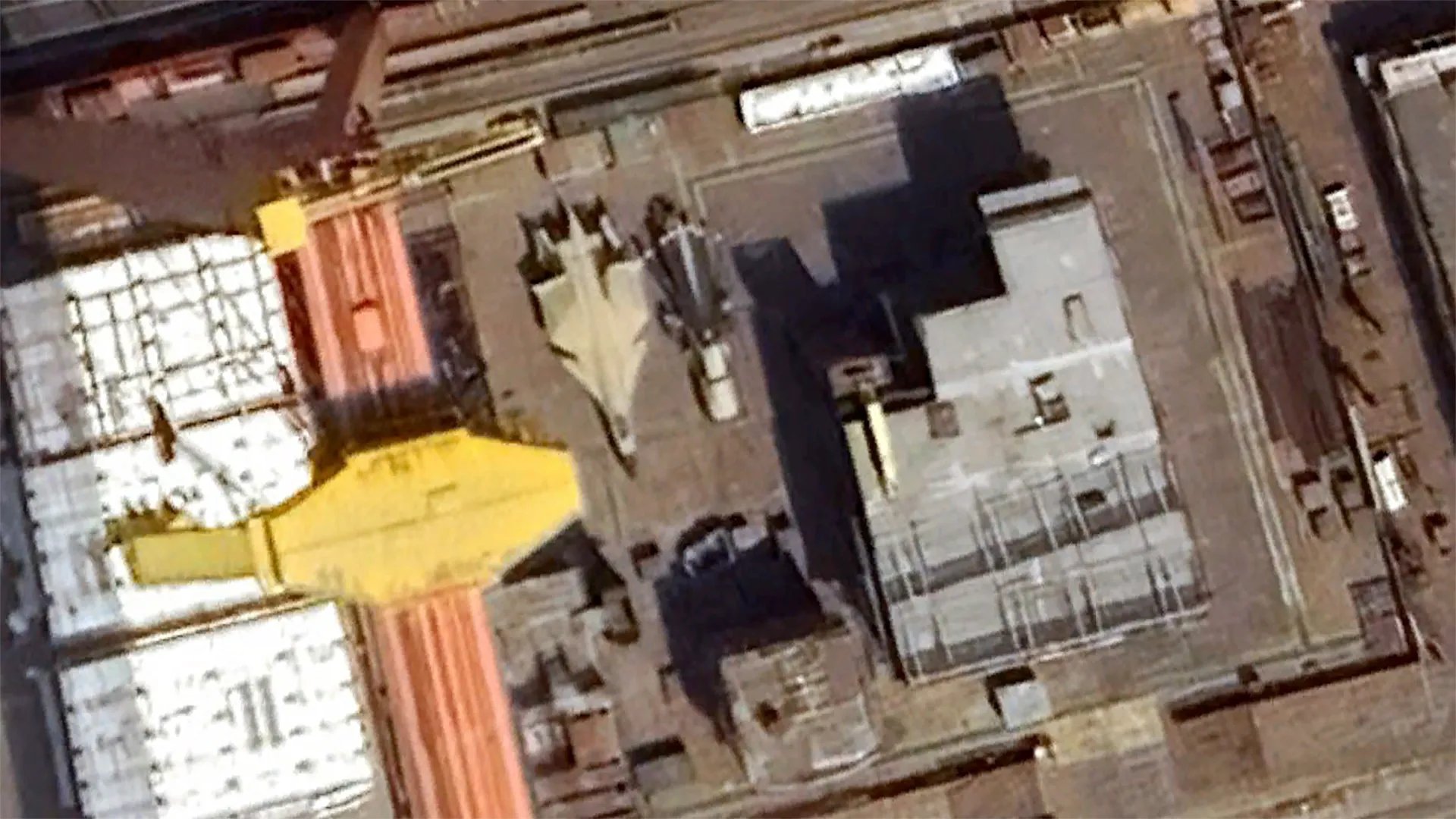
Based on this module, it appears likely that the Type 004 will be loosely modeled after the Ford class, at least in terms of having two waist catapults, in addition to the two bow catapults. This will provide an extra catapult compared with the Fujian, which has a single catapult in the waist position.
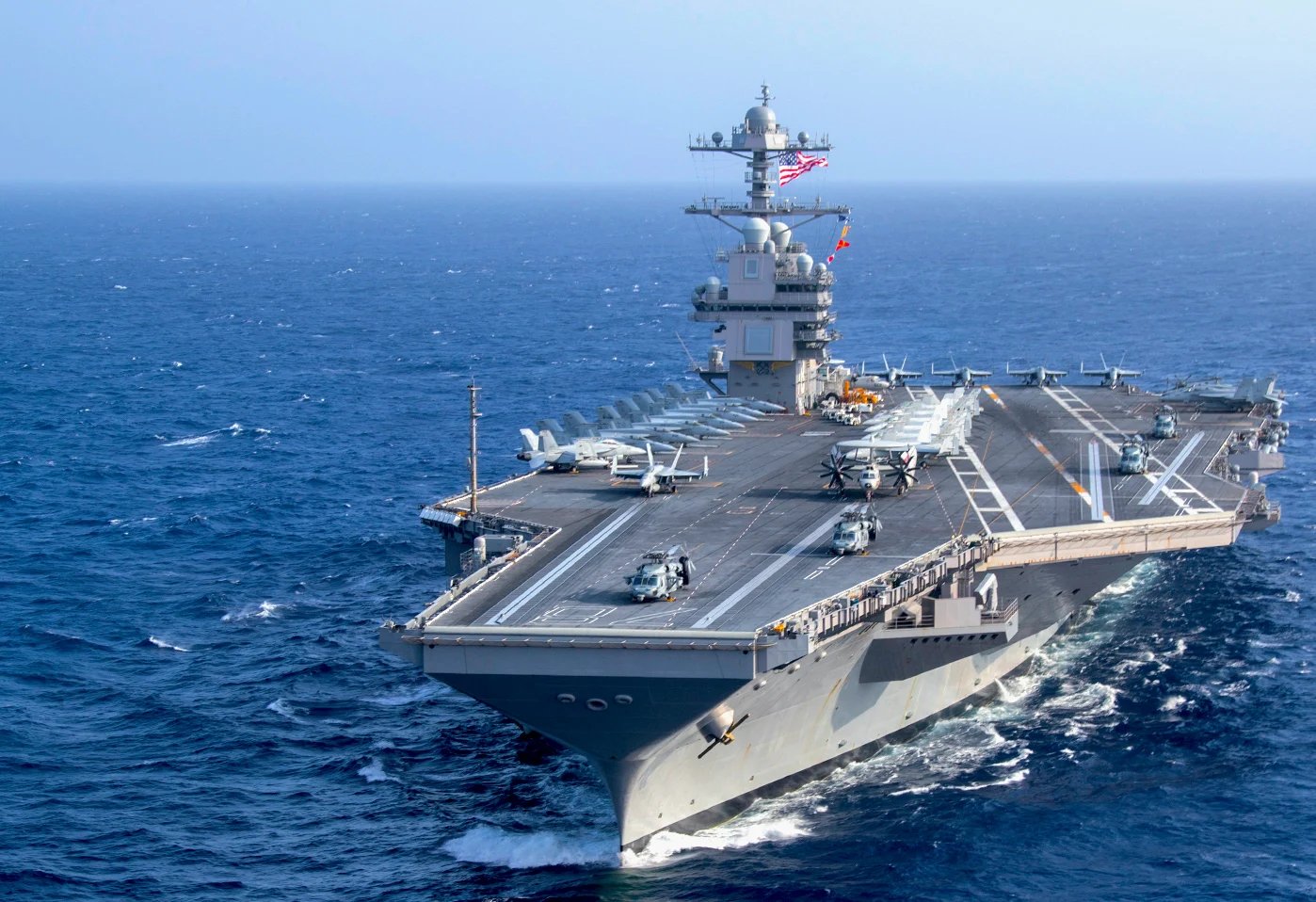
In the past, a Ford-style design also appeared in concept art from the Jiangnan Shipyard in Shanghai. The carrier shown in that artwork had some broad external similarities with the Ford, as well as with France’s future New Generation Aircraft Carrier. However, not too much should be read into this, especially since it appears that the Type 004 might now be under construction in Dalian, rather than in Shanghai. Still, the appearance of a superstructure far to the rear on the Wuhan mockup is indicative that this design element could appear on the Type 004.
Whatever the final configuration of the Type 004 — and, at this early stage, we really don’t know for sure — previous suggestions hinted that the new carrier could enter service sometime in the late 2020s.
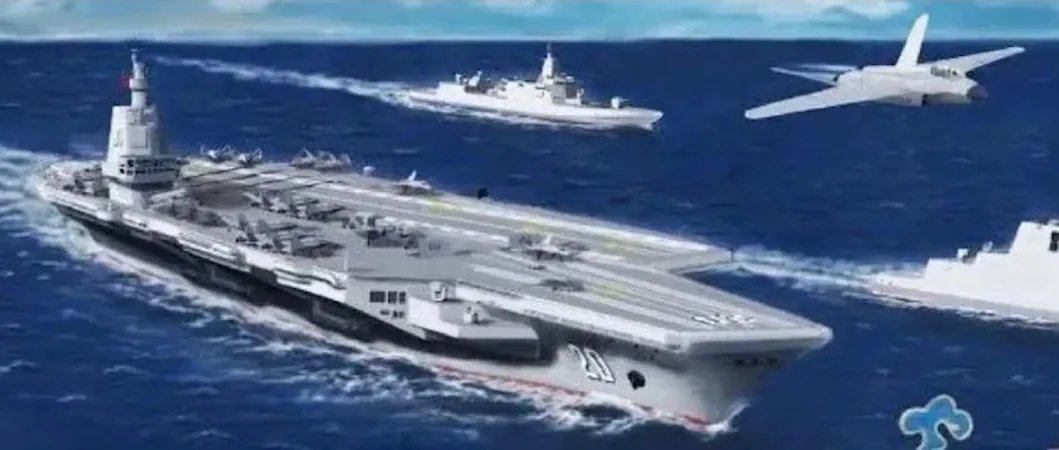
The Type 004 is expected to be a more advanced design than its predecessors, including the Fujian, the country’s first truly domestically designed and produced carrier, which is still preparing for operational service.
Like the Fujian, the Type 004 will be equipped to launch aircraft via catapults. This is in contrast to the PLAN’s two previous carriers — the Shandong and the Liaoning, which are both short takeoff but arrested recovery, or STOBAR, types with prominent ‘ski jump’ takeoff ramps.
As we have discussed in the past, catapults offer many advantages over STOBAR, especially when it comes to launching aircraft at higher gross weights, which translates to larger fuel and ordnance loads. They can also generally accommodate a wider array of aircraft types, too. This includes larger and slower designs, like the KJ-600 AEW&C aircraft, as well as smaller ones, such as drones.

It’s assumed that the Type 004 will use an advanced electromagnetic aircraft launch system (EMALS), provided it proves to be successful on the Fujian. Otherwise, this type of equipment is currently only in use with the U.S. Navy.
Other new developments for the Type 004 will address its air wing, which is expected to host various drones, such as navalized versions of the GJ-11 Sharp Sword UCAV. These will be in addition to the aforementioned KJ-600, various different advanced versions of the J-15, and the J-35, plus helicopters.
Less clear is what type of propulsion the Type 004 will use, although there have been repeated reports that it will be a nuclear-powered vessel. This would be a first for a PLAN carrier and would guarantee an effectively unlimited range, as well as help meet the power-generation demands of ever-improving sensors and other mission systems.
In its most recent assessment of Chinese military power, the Pentagon doesn’t explicitly mention the Type 004, but does state that the PLAN is “in the beginning stages of operating its multi-carrier force.” It also notes that the Fujian is just the first warship within a “next generation of carriers” that will be characterized by “greater endurance and an electromagnetic catapult launch system, making them capable of launching various types of specialized fixed-wing aircraft for missions, such as airborne early warning and electronic warfare. This will increase the striking power of a potential PLAN carrier battle group when deployed to areas beyond the PRC’s immediate periphery.”
At this point, we cannot be certain that the module seen under construction at Dalian is indeed made to resemble the Type 004, although it seems likely. However, this development, as well as the changes to the land-based aircraft carrier mockup in Wuhan, certainly point to activities related to China’s next domestically produced carrier design are accelerating.
Contact the author: thomas@thewarzone.com
